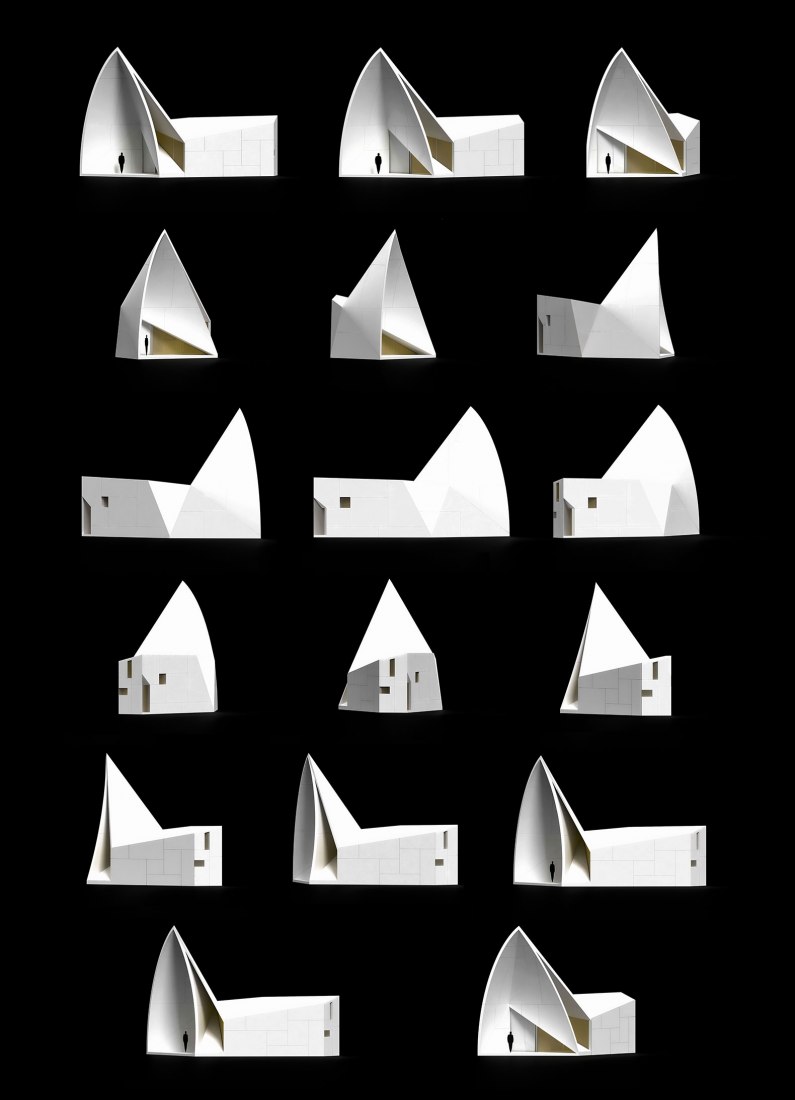A large hanging concrete cross pierces the fold, forming light holes in relation to the orientation, illuminating the room. The white color of the construction stands out against the landscape in which it is located and acts as a visual reference point.

Chapel in Sierra la Villa by Sancho-Madridejos Architecture Office.Photograph by Hisao Suzuki, Sancho-Madridejo.
Description of project by Sancho-Madridejos Architecture Office
In a mountainous situation in the center of Spain, in Cuenca, within a rural estate, with holm oaks centenarians, and truffle crops, a chapel and a house for the family that owns the land.
The Chapel arises from a unitary curved fold, which is related conceptually and in its approach with the Chapel of Valleacerón. Fold that needs to be built in reinforced concrete so that it works structurally in a unitary and correct way. Here too, structure, form and generated space are related in the same gesture. The space is valued in its character by middle of the light.
In this project, a curved fold is proposed as a response to external stresses in a complex topological action. It is not an origami, it is a formal topological expression - in equilibrium structural–, due to external stresses. A wide entrance is proposed, which welcomes, to reach a compressed finish. A large hanging concrete cross pierces the fold, forming light holes in relation to orientation, which casts different types of light throughout the day, and modifies the interior space little by little, but steadily. It is a space experience opposed to that of the Chapel of Valleacerón.
The chapel, for which we were able to choose its location, acts as a visual reference point, both from access to the rural farm, as from the path to it, where it turns into an access circular.
The house is located in the final section of the access to the chapel, at the top of a small valley giving a light valley of cherry trees and crops, with a distant view of the territory where it is located.





































